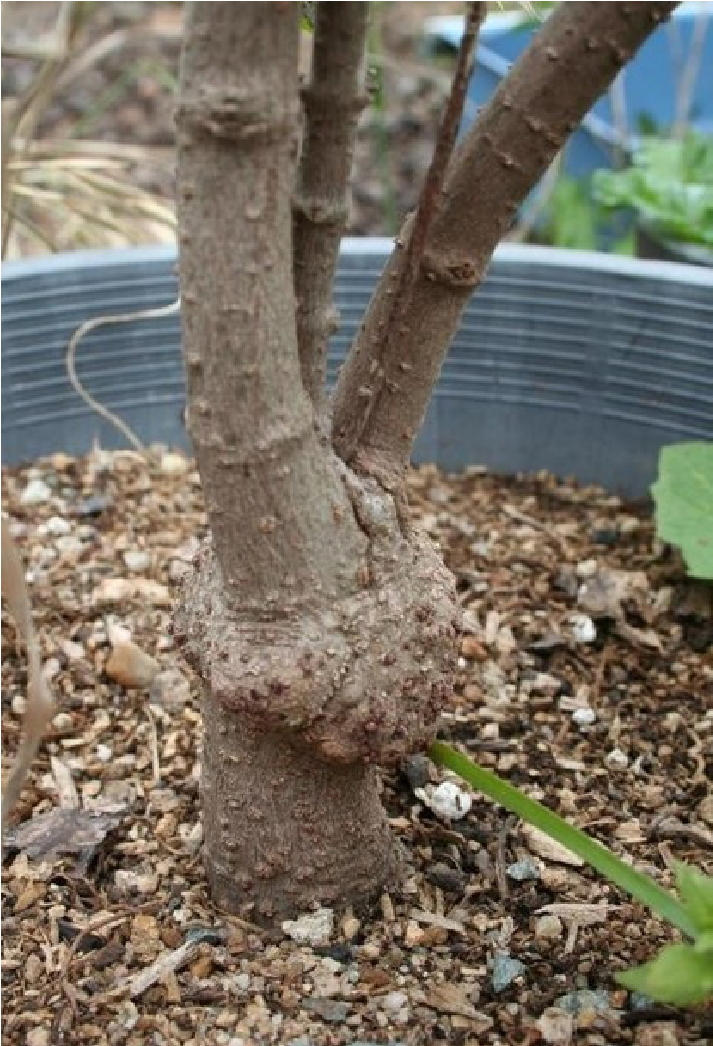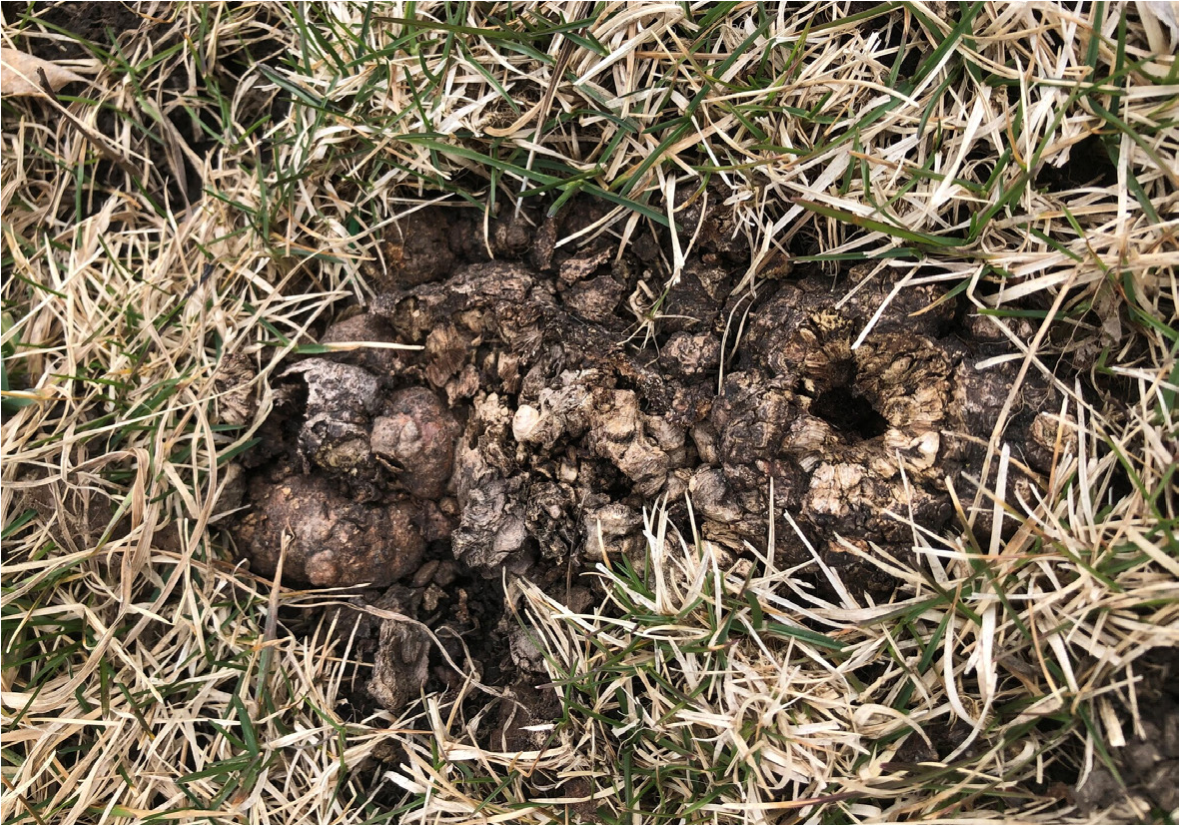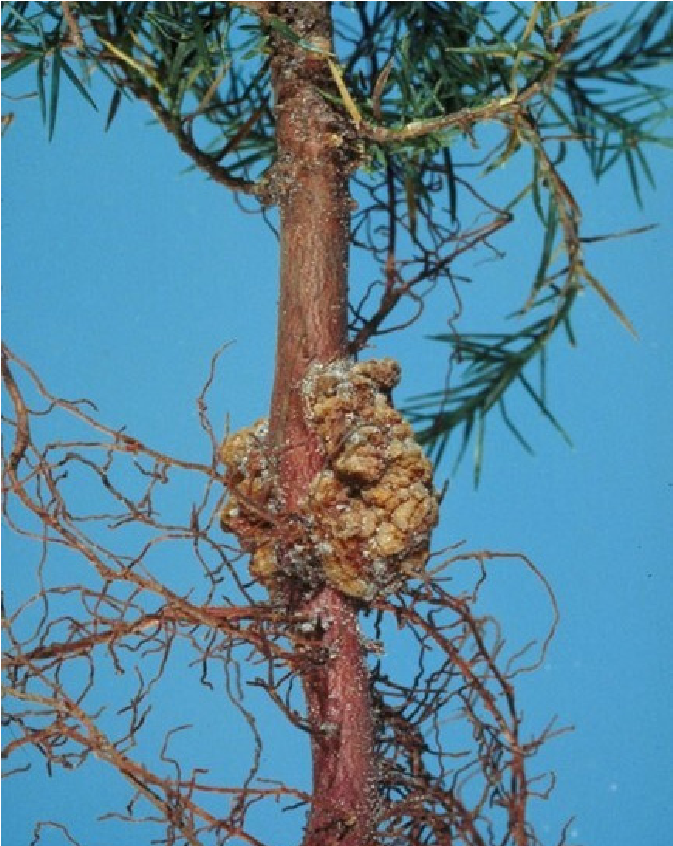Crown Gall (Scientific Name of Pathogen: Agrobacterium tumefaciens - Bacterium)
Hosts:

Figure 1: .Crown gall developing on the main stem close to the base. Photo by Lesley Ingram, Bugwood.org.
Affects a wide variety of woody plants; often on Populus spp.
Damage/symptoms:
Soft, spherical, white to cream colored galls form at the base of stems/trunks, root crown, or on roots. Young galls can be mistaken as callus tissue. As gallsbecome older, their shape becomes quite irregular and they turn brown or black. The tissue can be spongy and crumblythroughout the gall or can be woody and knot-like.The size of the galls increases with the growth of affected trees. Infected plants may appear stunted and express a lack of vigor due to water stress caused by a diseased root system.
Disease cycle:
Crown gall bacteria are common soil inhabitants. They survive free-living in soils with good aeration and on the root surface of weeds.

Figure 2: . Mature crown gall in lawn on root of established aspen tree. Photo by Eva Grimme, Montana State University
The bacteria enter plants through fresh wounds inflicted by cultural practices like grafting or mowing or by natural causes (wind, hail). They then stimulate the host cells to grow rapidly and irregularly resulting in formation of galls.
Management:
There is no cure for crown gall infection. Remove young plants that are infected to minimize spread of the disease. Avoid any type of wounding during cultural practices. Consider raising the soil level above exposed tree roots to avoid spreading infection during mowing practices. Disinfect your tools with 70% ethyl alcohol or a standard household disinfectant spray after being in contact with crown galls.

Figure 3: Young crown gall at the base of a young tree. Photo by Edward L. Barnard, Florida Department of Agriculture
By Eva Grimme, MSU Associate Extension Specialist III. February 2024. For more information, contact diagnostics@montana.edu.
This March 2024 fact sheet is also available as a printable PDF (913KB).
Disclaimer: These recommendations are provided only as a guide. It is always the pesticide applicator’s responsibility, by law, to read and follow all current label directions for the specific pesticide being used. The authors and Montana State University assume no liability resulting from the use of these recommendations. The Montana State University Extension Service is an ADA/EO/AA/Veteran’s Preference Employer and Provider of Educational Outreach.
